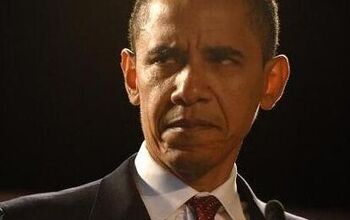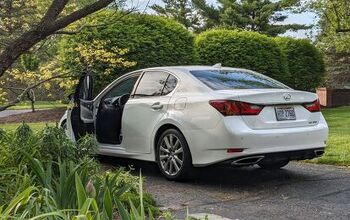CAFE Society
Here’s a surprise: Chinese law requires greater automotive fuel efficiency than American regulations. Although we’re not comparing Granny Smiths to Mandarin oranges– China uses a weight ratio, the US uses categories– it’s roughly 36 to 24mpg in favor of the Chinese. You’d expect this sort of disparity from Europe, Australia, Japan and Canada. But China? How can that be? In automotive terms, China’s just waking up. Or is it that the US is still asleep?
In 1975, in response to the 1973-74 Arab oil embargo, Congress enacted America’s federal Corporate Average Fuel Economy (CAFE) regulations. The new rules dictated the average fuel economy (in miles per gallon) of a manufacturer’s fleet for any given model year. The plan was simple: reduce US domestic oil consumption by increasing vehicular efficiency. The formula was complex: non-commercial vehicles were excluded under rules designed for commercial vehicles, manufacturers were allowed to pay fines for non-compliance (e.g. BMW), and now, vehicles that will never see a drop of E85 fuel are tallied as if they were running on corn juice 24/7.
The impact of the legislation on oil consumption has been less than impressive. According to The US Department of Energy, from 1985 to 2005, America’s net oil imports grew from 4.3 mmbd (million barrels per day) to 12.6 mmbd. Transportation currently accounts for 69% of that total. Obviously, there are more cars on the road, and you could argue that the figure would have been much higher without CAFE breathing down the automakers’ collective necks. But even if you believe that the CAFE standards are working, clearly they’re not doing a very good job of achieving their original intent.
Meanwhile, the rest of the world has proven itself far more determined to achieve greater fuel efficiency for their privately owned vehicles. Their industry regulations and auto-related taxes are tougher on automakers and end users alike, using whatever legal strictures they can muster to discourage low-mileage, high pollution vehicles. In England, for example, company cars are taxed on the amount of CO2 they emit, which forces corporations to run smaller, more fuel efficient vehicles. While there’s a patchwork of national laws and taxes in this regard, it’s clear that the rest of the world is moving towards a common standard for automotive efficiency, and it's a lot higher than ours.
Generally speaking, that’s a good thing. The adoption of common worldwide standards is one of the main reasons the internet wrapped around the world so quickly. Thanks to definitive, compelling and effective worldwide technical coordination, the internet is one of the great industrial success stories in human history. Surely, worldwide standards for fuel efficiency would also have an enormous effect, reducing the cost of the technological and manufacturing development needed to reduce vehicular consumption.
Again, fuel economy standards around the globe can’t yet lay claim to any of the above adjectives. Every country’s regulations are different, both in terms of methods and goals. They change periodically. And yet, like other industrial standards, fuel efficiency regulations are starting to coalesce all on their own, stealthily. The movement towards a de facto standard is partially the result of consolidation within the global automotive industry. It also reflects a commonality of economic pressures against high mileage vehicles across the planet; including governmental edict, oil producing nations’ commercial manipulation and the “needs” of the free market.
All the major automakers selling vehicles in the United States are multinational players. They comply with fuel economy standards in every market in which they compete. For example, Shanghai General Motors Co. Ltd. is China’s number one automobile producer. Last year, this joint venture built 325,429 cars, meeting Beijing’s version of CAFE. Ford of Europe actual turns a profit, so it appears they know the lay of the land of 40 mpg. And so on, from BMW to Volkswagen. All the major players have proven themselves equal to the task of building the fuel efficient vehicles each market requires.
All this experience building fuel efficient vehicles for more demanding foreign markets renders automakers’ claims of technological impotence in the face of potentially more stringent American regulations, well, impotent. It makes their exploitation of legal loopholes– or willingness to simply pay the fines and be done with it– a morally questionable enterprise. It also raises a crucial public policy question: why can’t America be more like everyone else?
Is it because our high mileage carrots aren’t tasty enough, or our gas-guzzler sticks are sharp enough, or both? Where is the political will we need to tweak the regulatory and taxation system to achieve the goal we set for our country some 31 years ago? Even with US safety, pollution and CAFÉ regulations, the US domestic car market is more “free” than any other. The question is, can we afford it?
More by Michael Martineck
Latest Car Reviews
Read moreLatest Product Reviews
Read moreRecent Comments
- Lou_BC Well, I'd be impressed if this was in a ZR2. LOL
- Lou_BC This is my shocked face 😲 Hope formatting doesn't fook this up LOL
- Lou_BC Junior? Would that be a Beta Romeo?
- Lou_BC Gotta fix that formatting problem. What a pile of bullsh!t. Are longer posts costing TTAC money? FOOK
- Lou_BC 1.Honda: 6,334,825 vehicles potentially affected2.Ford: 6,152,6143.Kia America: 3,110,4474.Chrysler: 2,732,3985.General Motors: 2,021,0336.Nissan North America: 1,804,4437.Mercedes-Benz USA: 478,1738.Volkswagen Group of America: 453,7639.BMW of North America: 340,24910.Daimler Trucks North America: 261,959


































Comments
Join the conversation
Where is the political will we need to tweak the regulatory and taxation system to achieve the goal we set for our country some 31 years ago? Oh don't worry. If a new tax is needed, we will get one.
Must credit dhathewa on his comment again about social contract. I cannot help but feel that we are already sliding down the slippery slope to the degradation of human society with climate change about to kick our butts within this century. Hard thing is do we accept defeat or try and stop us from loosing?